The Chabad Paradox
The Hasidic group known both as Lubavitch, after a town in Russia, and as Chabad, an acronym for the three elements of human and divine intelligence, Chochma (wisdom), Bina (understanding), and Da’at (knowledge), is not just the most successful contemporary Hasidic sect. It might be the most successful Jewish religious movement of the second half of the twentieth century.
While mainstream Orthodox Judaism has seen extraordinary growth through the ba’al teshuvah movement of “returners” to religious observance, the foundations were laid by Chabad. And while Orthodox Jews often express disdain for Chabad and its fervent shluchim (emissaries), they also rely on them for prayer services, Torah study, and kosher accommodations in out-of-the-way places from Jackson,Wyoming to Bangkok, Thailand, not to speak of college campuses around the world.
The Conservative movement historically caters to moderate suburban traditionalists. But many suburbanites now find themselves more comfortable at Chabad’s user-friendly services. Once the source of a distinctive middle-class Jewish nightmare—that one’s child might come home with tzitzis, a fedora, and extraordinary dietary demands (an “invasion of the Chabody snatchers,” as a joke of my childhood had it)—Lubavitch is now a familiar part of the suburban landscape.
For decades, the Reform movement has defined its mission as tikkun olam, “repair of the world,” understood not as metaphysical doctrine but as social justice. And yet it is the unabashedly metaphysical Chabad that opens drug rehabilitation centers, establishes programs for children with special needs, and caters to Jewish immigrants, to name just three of a seemingly endless list of charitable activities.
Finally, the charismatic founders of the groovy Judaism that arose in the 1960s, from the liberal Renewal movement to Neo-Hasidic Orthodoxy, were Rabbis Shlomo Carlebach and Zalman Schachter-Shalomi. Both began their careers as shluchim of the sixth Lubavitcher Rebbe in the late 1940s and continued under his successor before branching out on their own. Although neither remained within Chabad, both retained its can-do entrepreneurial flair, as well as a spark, as it were, of the Rebbe’s charisma.
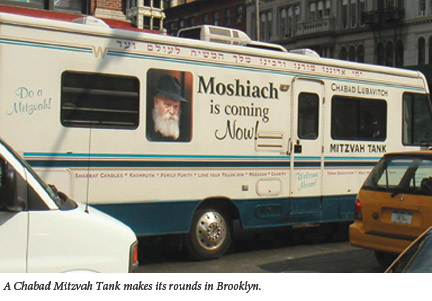
Each of these points needs qualification, but each could also be amplified. Despite its tiny numbers—at a generous guess, Lubavitchers have never comprised more than one percent of the total Jewish population—the Chabad-Lubavitch movement has transformed the Jewish world. It also has enviable brand recognition. This extends from the distinctive black suits, untrimmed beards, and genuine warmth of Chabad shluchim to renegade but still recognizably Chabad-ish figures like the reggae pop star Matisyahu and religious pundit Shmuley Boteach. But, most of all, Chabad is recognized in the saintly and ubiquitous visage of the late seventh Lubavitcher Rebbe, Menachem Mendel Schneerson, which has become, almost literally, a kind of icon.
By almost any conceivable standard, then, Chabad-Lubavitch has been an extraordinary success, except by the one standard that it has set itself: It has not ushered in the Messiah. It has, however, been the source of the greatest surge of Jewish messianic fervor (“We want Moshiach now and we don’t want to wait!”) since the career of Shabbtai Tzvi, the failed messiah of the seventeenth century. In fact, there are an indeterminate number of messianist Lubavitchers (meshikhistn) who continue to believe that the Rebbe did not truly die in 1994, and will return to complete his messianic mission. This is repudiated by the central organization of Chabad, though not as unequivocally as some critics would like. In any case, a successor to Schneerson seems inconceivable even to such moderates.
This raises a large question. It is often said of Chabad that the success of its institution-building and good works are unfortunately marred by its ardent messianism during the Rebbe’s life and especially after his death. But what if this messianism was the motivating force that actually made their success possible? If so, we would be presented with a kind of paradox: the belief that underlies the Lubavitchers’ success may yet undo them entirely.
None of this would have been likely or even possible had the movement not been headed, since 1951, by the subject of sociologists Samuel Heilman and Menachem Friedman’s ambitious and already controversial new biography, The Rebbe: The Life and Afterlife of Menachem Mendel Schneerson.
Menachem Mendel Schneerson was born in 1902 in Ukraine to a distinguished Lubavitcher family. Heilman and Friedman sketch his early life, but their most striking biographical claims come in the chapters on his young adult years. It used to be said that in the 1920s and ‘30s, Schneerson had received degrees from the University of Berlin and the Sorbonne. Actually, Friedman and Heilman show that when Schneerson left Russia for Germany he did not have a diploma and so was unable to seek regular admission to a university. Instead, he applied to audit courses at the neo-Orthodox Hildesheimer Rabbinical Seminary, which in turn allowed him to audit courses at Friedrich Wilhelm University. Later, in Paris, he received an engineering degree from the École Spéciale des Travaux Publics du Bâtiment et de l’Industrie, and went on to study mathematics at the Sorbonne before being forced to flee the occupying Nazis.
It was while auditing courses in philosophy and mathematics in Berlin that Schneerson married Moussia (or Chaya Mushka), the daughter of Rabbi Yosef Yitzchak Schneersohn, the sixth Lubavitcher Rebbe (the bride and groom were distantly related). Here Heilman and Friedman strive mightily to show that, far from being destined to succeed his father-in-law as Rebbe, Menachem Mendel and his new wife were trying out a less Hasidic, more cosmopolitan lifestyle. They write that “visitors of the few Hasidic congregations” in Berlin never saw Schneerson in attendance, and that he and Moussia liked to go out on the town on Monday nights. They also scant his Jewish study, and, almost as provocatively, strongly suggest that he trimmed his beard. In these chapters, Schneerson is described as leading a “double life.”
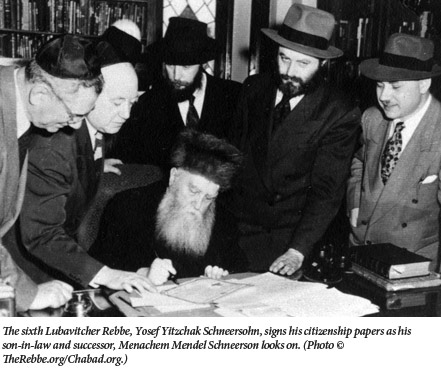
This is interesting, and may be true in some sense, but it would be more persuasive if Heilman and Friedman really had the goods. When one checks the endnote for who didn’t see Menachem Mendel Schneerson in shul, the only name turns out to be that of Yosef Burg. In the 1980s, the prominent Israeli politician told Friedman that he did not remember seeing Schneerson—a half century after the fact. What about those nights out in Weimar-era Berlin? They are mentioned on the authority of the “recollections of Barry Gourary,” a nephew who was five years old, lived in Latvia at the time, and later became bitterly estranged from his aunt and uncle.
The question of Schneerson’s rabbinic learning, his beard, and the couple’s years in Berlin and Paris have been the subject of a furious dispute between Samuel Heilman and Chaim Rapoport on a popular Orthodox blog site, Seforim. Although somewhat self-righteous and bombastic, Rapoport has gotten the better of the exchange. Even on Heilman and Friedman’s account, for instance, it emerges that during the period when Schneerson is supposed to have avoided Hasidic shtiblekh, he was piously fasting every day until the afternoon. Heilman and Friedman hypothesize that this was because he and Moussia were childless, but as Rapoport points out, he began the practice immediately after marriage. The fact that the Schneersons never had children is of extraordinary biographical and historical importance (if they had, the possibility of an eighth Lubavitcher Rebbe might have seemed more thinkable), but Schneerson would have had to be a prophet to begin worrying about this in 1929.
More importantly, Rapoport shows that remarks such as “a look through [Schneerson’s] diary . . . reveals that he had been collecting and absorbing the myriad customs of Lubavitcher practice for years” seriously understate the extent of Schneerson’s learning and piety. Schneerson’s posthumously published diary, Reshimot, along with his learned correspondence with his father and father-in-law, present a picture of someone thoroughly engaged in the intellectual worlds of rabbinic thought, Kabbalah, and Hasidism. Occasionally, one even finds him working to integrate all of this with his scientific studies. In one such entry, he links the fluidity of one’s inner experience to the traditional comparison of Torah with water, as well as to Pascal’s law of hydrostatic pressure.
This is hardly to deny that Schneerson contemplated leading a life devoted to engineering and science rather than religious leadership; the years of difficult schooling are inexplicable otherwise. But it is a failure of biographical research and imagination on Heilman and Friedman’s part not to have critically culled Schneerson’s correspondence and journals to give a sense of his inner life in all of its fluidity. He was an aspiring engineer and a kabbalist, but since Heilman and Friedman take an extremely selective approach to the letters and journals of this period of his life, they fail to portray the second half of the equation. In part, this is because the sources were edited within a Chabad movement zealously dedicated to the memory of its Rebbe, but it plainly also has to do with the difficulty of the material.
Their circumstantial approach to biography reaches its height, or depth, in Heilman and Friedman’s account of the Schneersons’ years in Paris. The couple chose to live in the fourteenth arrondissement, far from synagogues but just moments from the café Le Select where “one could find the most outrageous bohemian behavior” and within hailing distance of some of Sartre and Beauvoir’s favorite haunts. “Could the Schneersons have remained completely ignorant of this life around them?” Heilman and Friedman ask. Based on the evidence presented, my guess would be mostly yes. (One would like to know more about Moussia, who read Russian literature and attended the ballet, but she remains a cipher throughout the book, as does the Schneersons’ marital relationship).
As for whether Schneerson cut his beard as a young man, I remain agnostic, if not apathetic. A photograph from the period shows a dapper Schneerson in a brown suit, light-colored hat, and short beard, standing on a bridge and looking out at the water. But Lubavitchers sometimes comb their beards under and pin them to achieve a neat look. Hedging, Heilman and Friedman describe the beard as “trim-looking,” but they clearly think scissors were involved and that his father-in-law was furious. Yet in pictures taken two decades later, after he had already become the Rebbe, Schneerson still looks well-groomed. In one, he stares back at the camera, his eyes framed by a sharp black hat and a trim black beard, looking a little like a rabbinic Paul Muni.
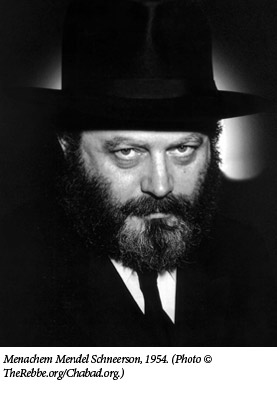
Lives of saints have a sense of fatedness or inevitability that Heilman and Friedman are certainly right to avoid. Menachem Mendel Schneerson was not predestined to become the seventh Rebbe, let alone the Messiah.
There was, in fact, significant opposition to his succeeding his father-in-law. In the first place there was his mother-in-law. Nechama Dina Schneersohn favored her other son-in-law, Rabbi Shmaryahu Gourary (the above-mentioned Barry’s father), who had been at her husband’s side while Schneerson was studying in Berlin and Paris. Schneerson’s ascension was not immediate, and his eventual victory left a deeply divided family. Symbolically, his mother-in-law refused to allow him to wear her husband’s shtrayml, the fur hat worn on Shabbat, Holy Days, and important occasions. Heilman and Friedman describe Schneerson’s pragmatic response with a rare sense of admiration:
Rabbi Menachem Mendel handled this as he handled other challenges, with creativity. He simply removed the use of shtraymls from Chabad rabbinic practice and was forever after seen only in his trademark black snap brim fedora.
Schneerson was clearly an inspired tactician and executive, with a genius for public relations. Again and again, Heilman and Friedman show, he was able to inspire and empower his followers to strike out in the world and spread the message of the need to perform more ritual commandments and acts of lovingkindness. But they also see a pattern. Near the end of his great twelfth-century code of Jewish law, the Mishneh Torah, Maimonides lays out the criteria for the true Messiah:
If a king arises from the House of David who delves deeply into the study of the Torah . . . if he compels all Israel to walk in [its ways] . . . and fights the wars of God, he is presumed to be the Messiah. If he succeeds and builds the Holy Temple on its site and gathers the scattered remnants of Israel, then he is certainly the Messiah.
If one identifies the “kingship” of Lubavitch with that of the House of David, then the Rebbe’s missionary work through his many public campaigns—to encourage the lighting of Shabbat candles, the wearing of tefillin, and so on—can be seen as steps toward fulfilling the second criterion. And what of “the wars of God”? The Chabad youth group Tzivos Hashem, or the “Army of God,” was established under the leadership of a Rebbe who also dispatched “mitzvah tanks” emblazoned with inspirational slogans. Perhaps more speculatively, Heilman and Friedman also argue that the Rebbe competed with the State of Israel by taking spiritual credit for its military victories. In short, the overarching goal of Chabad’s activities was to make the Rebbe the presumptive Messiah and “force the end” of history, to use a classic (and disparaging) Rabbinic phrase.
Certainly, this is how many if not most of his Hasidim seem to have understood these activities at the time. Although he often rebuked those who publicly urged him to declare his Messianic kingship, what they took him to mean was “not yet.” They were probably right. It is a Chabad doctrine that there is a potential savior in every generation, and it seems unlikely that Schneerson thought that it was somebody else. Friedman and Heilman say that he hinted at this when he used the Hebrew word mamash. The word means really, or actually, but it can also be taken as an acronym for the name Menachem Mendel Schneerson. Thus, on the occasion of being honored by President Ronald Reagan he said that the “Messiah is coming soon, mamash,” and he is reported to have later repeated the assurance, adding “with all its interpretations.”
The parsing of such proclamations may sound trivial, but the radical seriousness with which Schneerson and his followers took their spiritual task should not be underestimated. He really does seem to have felt responsible for all Jews and to have conveyed a sense of this deep caring to virtually each of the thousands who sought an individual audience, or “yechidus,” with him. His followers took this same sense of care to the streets and around the world, and continue to do so.
Schneerson’s charisma was palpable even to non-followers. Norman Mailer, a connoisseur of charisma if not of theology, felt it when he and Norman Podhoretz visited Chabad headquarters at 770 Eastern Parkway for kol nidrei in 1962. The willingness of non-Hasidim to tell miraculous tales of the Rebbe also suggests an extraordinary personality that is sadly not on display in The Rebbe. Even if he was not the Messiah, the Rebbe may have been the most influential Hasidic leader since the founder of the movement, Israel Ba’al Shem Tov. Heilman and Friedman’s biography simply doesn’t show us how Schneerson became that person.
The Rebbe does show that the messianism, which burst into public awareness in the 1970s and ’80s, was present from the outset of Schneerson’s leadership, and had its roots in his father-in-law’s understanding of Hasidism.
In 1751, the Ba’al Shem Tov described a vision in which he ascended to heaven:
I entered the palace of the Messiah, where he studies with all the Rabbinic sages and the righteous . . . I asked, “when are you coming, sir?” He answered me: ” . . . [not] until your teaching has become renowned and revealed throughout the whole world . . . I was bewildered at this [and] I had great anguish because of the length of time when it would be possible for this to occur.
Gershom Scholem, the great historian of Jewish mysticism, saw this postponement as evidence that Hasidism was, in part, an attempt to neutralize the kabbalistic messianism of Shabbtai Tzvi and his followers while retaining its popular dynamism. His interpretation has been the subject of much scholarly controversy but it fits the Tanya, the first work of Chabad Hasidism, by its founder Schneur Zalman of Liadi. The “Alter Rebbe,” as he is known within Chabad, describes messianic redemption as the final illumination of the revelation begun at Sinai, but it does not sound imminent.
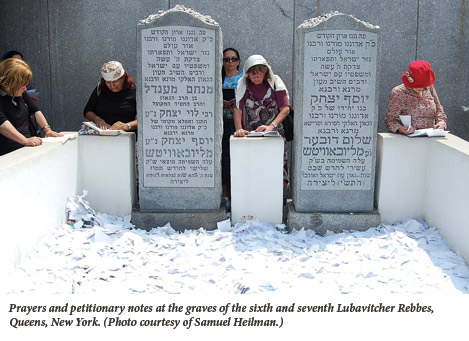
However, by Rabbi Yosef Yitzchak Schneersohn’s reign there had been seven generations of Hasidic Rebbes who had followed the Ba’al Shem Tov, and six generations of Lubavitcher Rebbes. As early as 1926, Yosef Yitzchak emphasized the importance of a midrashic statement that “all sevens are dear to God.” In the 1940s, after experiencing the depredations of Communist rule and seeing some of his family and much of his world destroyed by the Nazis, he coined the slogan le-alter le-teshuvah, le-alter le-geulah (“repentance now, redemption now”).
Rabbi Yosef Yitzchak’s last work was entitled Basi Legani, or “I have come into my garden,” after the biblical verse, “I have come into my garden, my sister, my bride” (Song of Songs 5:1), understood as a poetic allegory of the consummation of the love between God and Israel, and also that between God and his exiled (feminine) presence, the Shekhina. It was delivered posthumously by Schneerson on the anniversary of his father-in-law’s passing, in what was to become his first address as Rebbe. Schneerson consoled his father-in-law’s Hasidim and himself by emphasizing that “the seventh is cherished.” Just as Moses and his generation had followed Abraham by seven generations, so too this generation was now the seventh Hasidic generation, whose task was to complete the process of drawing down the Shekhina. The end of the address is worth quoting at some length.
This accords with what is written concerning the Messiah: “And he shall be exalted greatly . . .” even more than was Adam before the sin. And my revered father-in-law, the Rebbe, of blessed memory . . . who was “anguished by our sins and ground down by our transgressions,”—just as he saw us in our affliction, so will he speedily in our days . . . redeem the sheep of his flock simultaneously from both the spiritual and physical exile, and uplift us to [a state where we shall be suffused with] rays of light . . . Beyond this, the Rebbe will bind and unite us with the infinite Essence of God . . . “Then will Moses and the Children of Israel sing . . . ‘God will reign forever and ever,'” . . . All the above is accomplished through the passing of tzaddikim, which is even harsher than the destruction of the Temple. Since we have already experienced all these things, everything now depends only on us—the seventh generation. May we be privileged to see and meet with the Rebbe here in this world, in a physical body, in this earthly domain—and he will redeem us.
Heilman and Friedman (who don’t discuss the discourse in its entirety) understand Schneerson to have been asserting from the very outset of his career that as the seventh Lubavitcher Rebbe he was destined to be the Messiah. But perhaps we ought to take him at his word here. In the sentences I have italicized, he is clearly describing his father-in-law as the Messiah who will “speedily in our days . . . redeem the sheep of his flock,” and will do so, moreover, “in a physical body, in this earthly domain.” So who was the beloved “seventh”? Schneerson may have been saying that it was his father-in-law–counting seven generations after the Ba’al Shem Tov and either placing himself as a mere member of that seventh generation under his father-in-law, or, perhaps, merging himself with his father-in-law as he does in the text. This is personally more modest but theologically bolder than the alternative, for it already sets the precedent for one of the features of present-day Lubavitcher messianism that many find so objectionable: the promise that a Messiah who has died will return a second time to complete the redemption.
Schneerson continued to elaborate on the themes of Basi Legani every year on his father-in-law’s yahrzeit. It would be interesting to see if and how the interpretation evolved, but Heilman and Friedman have little time for textual analysis of any kind. Unfortunately, this is a biography of an intellectual (Schneerson was immersed in the reading and writing of abstruse texts throughout his life) that shows little interest in his intellectual biography.
What did Schneerson think the Messianic era would look like? Elliot Wolfson’s recent book, Open Secret: Postmessianic Messianism and the Mystical Revision of Menahem Mendel Schneerson, provides an astonishing answer. Wolfson has little interest in court politics or the externals of Schneerson’s biography, but he has read his mystical writings very closely. This is not easy work. Not only did the Rebbe write an extraordinary amount (the collected Hebrew and Yiddish discourses alone comprise thirty-nine volumes), but he wrote in a rebarbative style that goes all the way back to the Tanya. Joseph Weiss once described it as “marked by long sentences, extremely condensed in character, with the main subordinate clauses often mixed up, and frequent anacoluthic constructions.” This sounds about right, as long as one adds the penchant for deliberate paradox, though there are also sudden moments of beauty.
Wolfson is a difficult writer himself but he has read the Rebbe with extraordinary sympathy and erudition. To explain the notion of primordial essence in Chabad metaphysics, he cites “Schelling’s notion of ‘absolute indifference’ of the being or essence (Wesen) that precedes all ground and is thus referred to as the ‘original ground,’ the Ungrund, literally the nonground.” On Wolfson’s reading of Schneerson, in the Messianic era all differences—those between man and woman, Jew and gentile (though Schneerson was not as consistent as he would like here) and even God and the universe—will not be erased but rather returned to something like the original nonground of Schellingian indifference.
And how will the Messiah do this? Wolfson’s interpretation is an act of hermeneutic chutzpah:
In my judgment, Schneerson was intentionally ambiguous about his own identity as Messiah . . . Simply put, the image of a personal Messiah may have been utilized rhetorically to liberate one from the belief in a personal Messiah . . . Schneerson’s mission from its inception is about fostering the “true expansion of knowledge,” an alternate angle of vision . . . marked by progressively discarding all veils in the effort to see the veil of truth unveiled in the truth of the veil.
The king, as it were, has paraded without clothes in order to show that there is no difference between being clothed and naked, or as Kafka said, “the Messiah will come only when he is no longer necessary.” One notes the postmodern resonance, but could this really be the message Menachem Mendel
Schneerson tried to teach for four decades?
In 1991, a frail 89-year-old Rebbe addressed his Hasidim poignantly:
What more can I do? I have done all I can so that the Jewish people will demand and clamor for the redemption, for all that was done up to now was not enough, and the proof is that we are still in exile and, more importantly, in internal exile from the worship of God. The only thing that remains for me to do is to give over the matter to you. Do all that is in your power to achieve this thing—a sublime and transcendent light that needs to be brought down into our world with pragmatic tools—to bring the righteous Messiah, in fact immediately (mamash miyad).
I can see how to read this like Wolfson, but I can’t buy it. The Rebbe, I believe, meant the Messiah mamash.
Gershom Scholem once described messianism as an anarchic breeze that throws the well-ordered house of Judaism into disarray. Although the official position of the Chabad movement is that Menachem Mendel Schneerson did in fact pass away and is not (or at least not so far) the Messiah, its house remains disordered. As I write, yechi Adoneinu Morenu ve-Rabeinu Melekh ha-Moshiach le-olam va-ed is chanted at prayer services in the Rebbe’s own synagogue in the basement of Chabad headquarters. Their master and teacher and rabbi, the King Messiah will live forever. Meanwhile, the central Chabad organization, which occupies the rest of the building, seems to be nearing the end of a six-year legal battle to evict the meshikhistn. Of course the messianism extends beyond Crown Heights. My son has a handy card with the tefillat ha-derekh, the prayer for travelers on one side and a picture of the Rebbe over the word “Moshiach,” which was thrust into his hands in Jerusalem. In recent months I have seen messianist banners, bumper stickers, posters and yarmulkes in Los Angeles, Florida, and Cleveland.
To its great credit, Chabad’s worldwide operations have continued to expand in the sixteen years since the Rebbe’s death. But this fact does not quite undermine the paradox with which I began. Although many, perhaps most, within Chabad no longer live in an ecstatic anticipation of redemption, the Rebbe still seems to be the mainspring for all of their activities. It is not just that there is no eighth Lubavitcher Rebbe and is not likely to be one until the Messiah comes (after which, as Kafka might say, we might no longer need one), but that the fervent devotion to the previous Rebbe seems perilously close to crowding out other religious motivations.
Could Chabad continue to thrive if the seventh Lubavitcher Rebbe was no longer at the center of his followers’ spiritual universe? If they came to see him in a light no different than that of his predecessors—a great leader but not the Messiah, a great rebbe but not irreplacable? Can the apparently superhuman achievements of the Chabad movement continue if its Hasidim lose their superhuman inspiration? This is a problem that only Chabad can address but it is a dilemma that all Jews must confront. At stake are not only the spiritual lives of Lubavitcher Hasidim but also the camps, schools, synagogues, and programs that now serve Jews around the world.
Suggested Reading
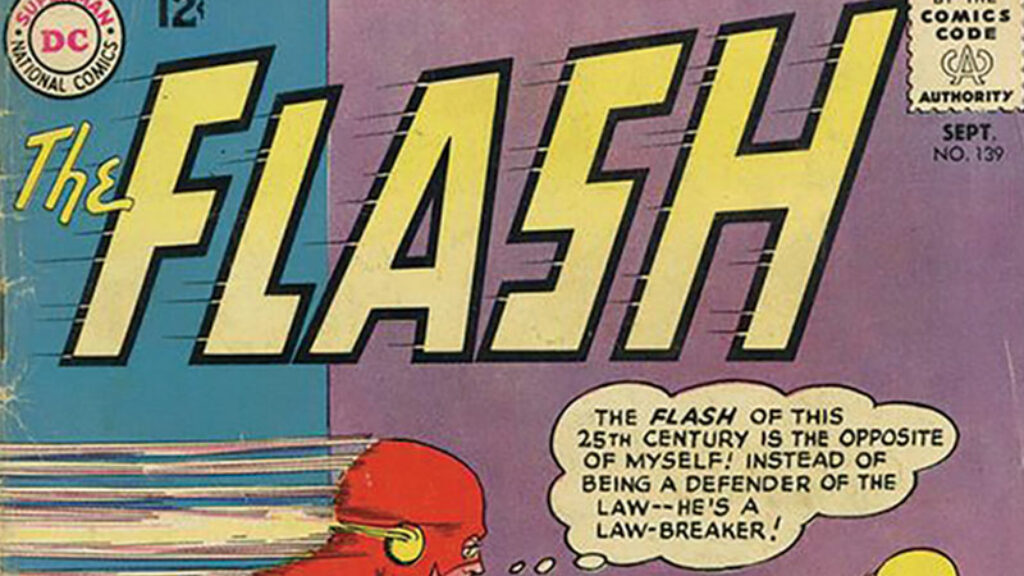
Super Stan
Even in comparison with so many other contributions to American popular culture and entertainment, comic books are an especially Jewish story.
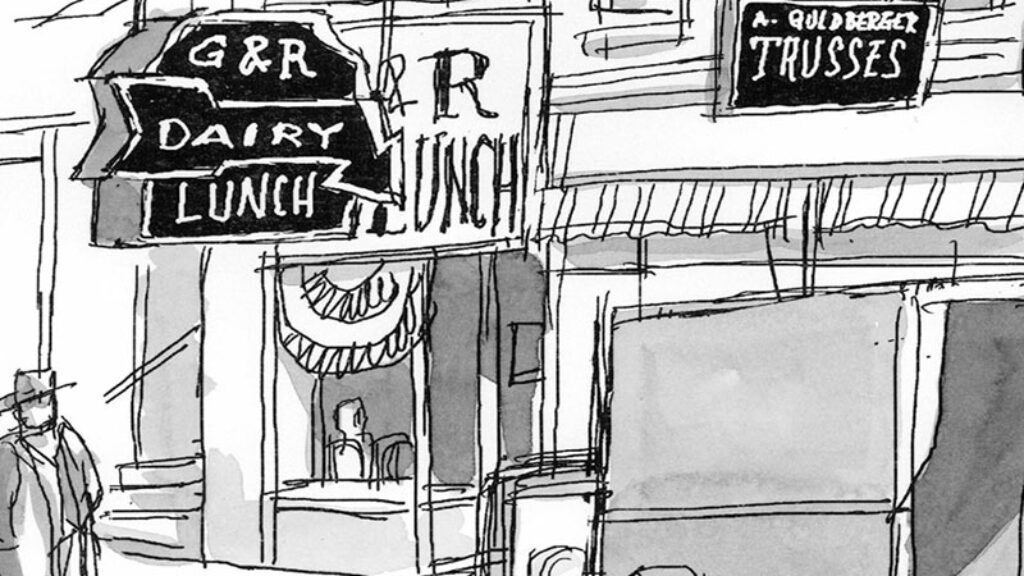
The Milchik Way
Katchor seems to take his cue from these menus with their meandering columns of dense text; their indirection parallels and feeds his own.
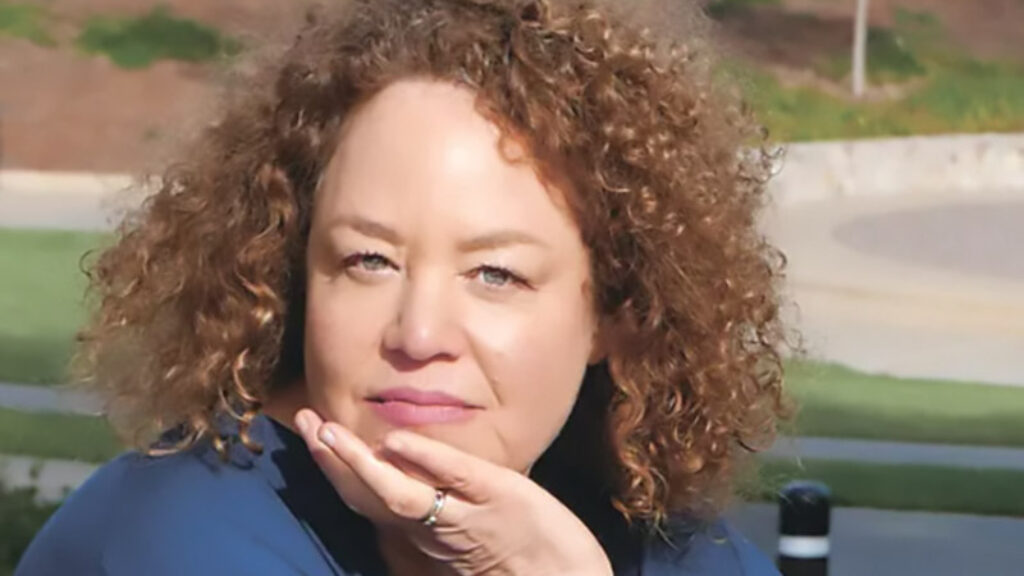
Od Tireh, Od Tireh . . .
The Hebrew Teacher is the first of Maya Arad’s acclaimed fictions to appear in English. It’s also surprisingly timely.
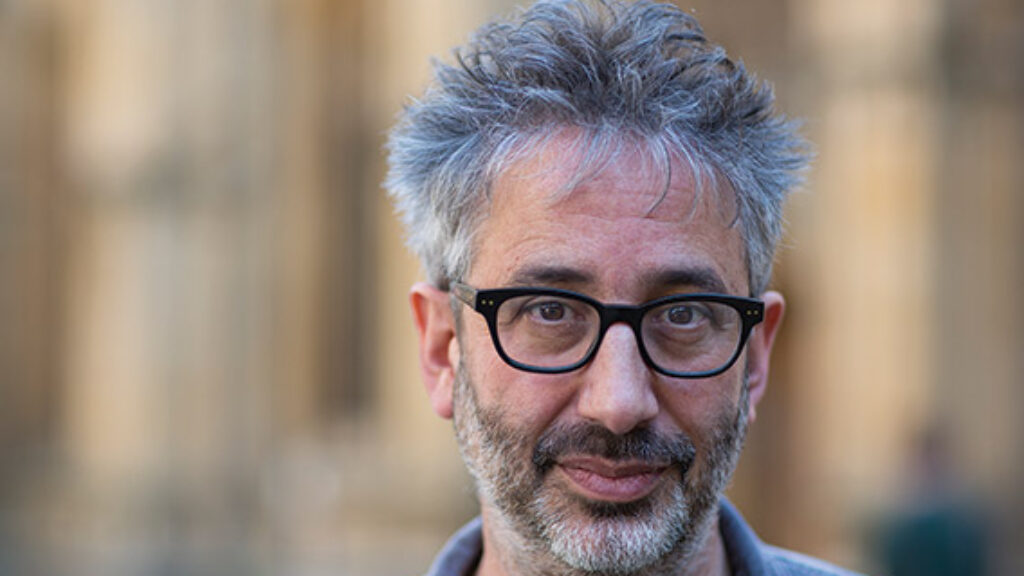
Do Jews Count?
I would never have said this ten years ago, or even five years ago, but there apparently comes a time in the lives of those who write about Jewish identity when they have to decide whether to write about . . . it.
Comments
You must log in to comment Log In